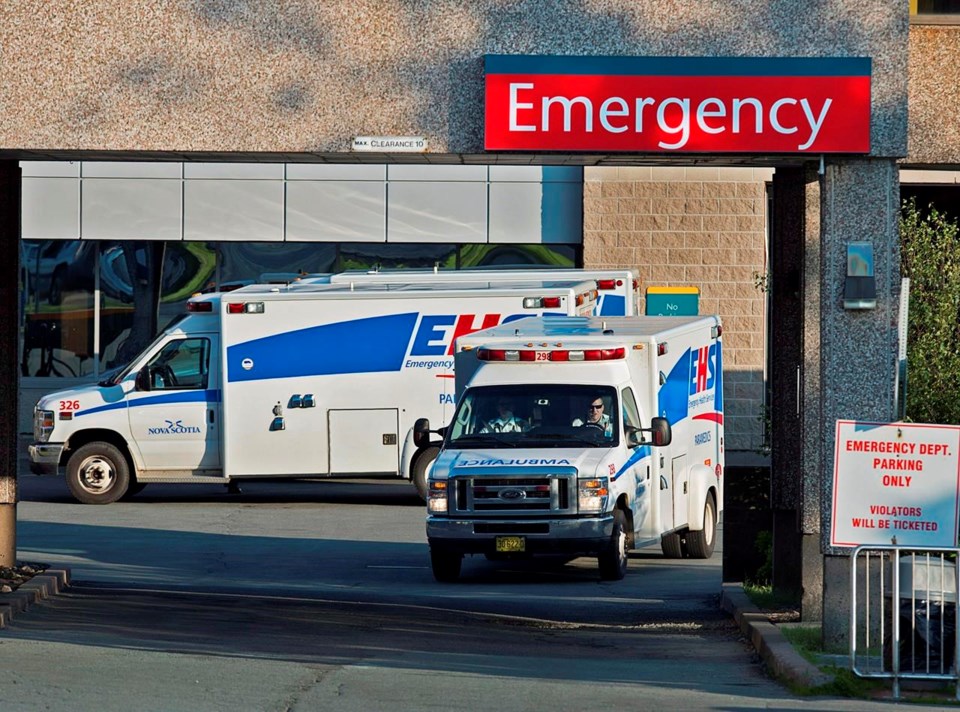HALIFAX — Senior officials with Nova Scotia's Health Department were unable to answer a number of questions on Wednesday about the state of the province’s emergency health system, which is struggling with overcrowding and staffing shortages.Â
During a legislature committee meeting Wednesday, the Health Department’s deputy minister and employees of Nova Scotia Health couldn't say how many ERs were closed or how many public notices about crowded hospitals were issued over the course of the past month.
Officials were also unable to provide an estimate for how long Nova Scotians are waiting in emergency departments at regional hospitals or at Halifax’s children’s hospital IWK Health Centre.Â
Emergency department wait times are “far too long, but I don’t have the exact numbers in front of me,” Dr. Tanya Munroe, a senior medical director with the health authority, told the committee.Â
Liberal member of legislature Brendan Maguire told the committee it was frustrating not to have answers to these "very simple questions."
Maguire said he would expect that "individuals in senior management positions in the Department of Health and Nova Scotia Health authority should be able to answer."
NDP health spokesperson Susan Leblanc said she was disappointed by the lack of answers, a statement that was echoed by the committee’s chair, Liberal party member Kelly Regan.Â
“We have a number of questions, many of which were not answered here today,” Regan said toward the end of the meeting. “We want answers by the end of the week.”
Regan said she will compile upwards of 10 unanswered questions from Wednesday's hearing and submit them to Nova Scotia Health, the Department of Health and the IWK to be answered before the next committee meeting, scheduled for Nov. 30.
Nova Scotia's hospitals are dealing with high numbers of sick patients, as influenza, respiratory syncytial virus and COVID-19 are circulating at the same time. The head of pediatrics at IWK Health Centre told reporters last week that there were more sick children in the province's hospitals than he had seen in 30 years.
Deputy minister of health Jeannine Lagassé told the committee Wednesday she is “very aware” that work is needed to improve the province’s emergency health system. “The reality we face in Nova Scotia and across the country is that our emergency departments are facing more demand than ever before,” Lagassé said.
“The way we have always done things is not working, the time for change is now,” she said.Â
Adding pressure to the health system is the high number of vacant nursing positions across the province, Lagassé said. The deputy minister said that because the health-care system is complex, improving the crowding and wait times is “not as simple as adding more staff to existing emergency departments.”
She said that addressing the pressures on the network will require many changes, including employing virtual care in ERs and allowing more flexibility for staff scheduling, to improve retention.
Suzy Hansen, the NDP member of legislature for Halifax Needham, asked the deputy minister if the province will look at raising nurse wages to improve recruitment. Lagassé responded that the province will consider raising salaries, "but we think there are a number of things beyond collective bargaining" that can help with recruitment and retention.
Premier Tim Houston’s Progressive Conservatives won the August 2021 election with a campaign that focused largely on fixing the province’s health system. As of Nov. 1, there were 120,400 Nova Scotians on the wait-list for a family doctor or nurse practitioner — up from less than 81,300 people at the same time last year.Â
On Aug. 31, the province opened its virtual primary-care services to all Nova Scotians on the wait-list for a family doctor or nurse practitioner. The province has 55 family doctors and 12 nurse practitioners who have general practice commitments but who are also working part time in virtual care.
There are between 150 and 200 virtual health visits available on a typical weekday.
This report by The Canadian Press was first published Nov. 23, 2022.
---
This story was produced with the financial assistance of the Meta and Canadian Press News Fellowship.
Lyndsay Armstrong, The Canadian Press



